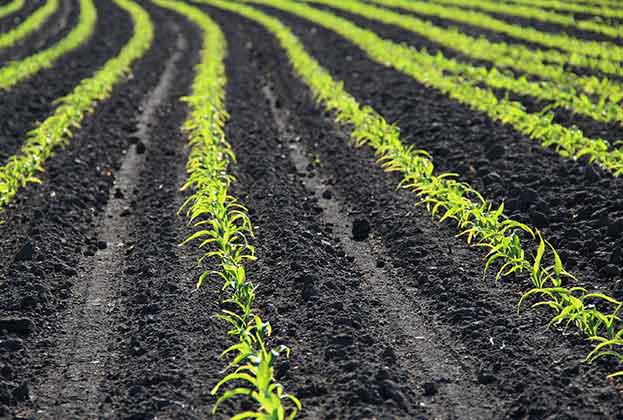We look at the environmental provenance of food imported into the UK
The UK’s food footprint isn’t just made up of what the country produces domestically. By value, the UK is a net importer of food (importing £39.5 billion of food between March 2021 and February 2022 and exporting £13.9 billion – Defra, 2021). As with domestic production, food imported to the UK creates an environmental impact. Rising environmental standards in the UK risks offshoring production to third countries where traceability and standards may not be guaranteed. Savills Rural Research analysed the provenance of imported food that is consumed in the UK and scored the relative environmental impact of each exporting country.
The chart below shows the UK import value of four key food commodities: fruit and vegetables, meat, cereals, and dairy and eggs. Together, these commodities account for £24.5 billion worth of imports, or 62% of all food and drink imported into the UK between March 2021 and February 2022. The infographic also illustrates the environmental impact of food production in the countries of origin, considering factors such as land degradation, eutrophication and the risk to water quality from agriculture. Over two thirds (69%, or £16.8 billion) of our food imports originate from nations with worse environmental impact scores than the UK. For fruit and vegetables and cereals, the proportion of imports arriving from nations with worse environmental scores increases to 77%.
Trade deals and the environment
At the heart of the debate is the problem that while the UK can impose standards on its own food producers, the scope to impose them on imports through trade deals is much more limited. The World Trade Organisation (WTO) recognises limited legitimate barriers to trade, mostly based on food safety and labour standards. These standards don’t address the way the product is created, such as its environmental impact.
The government’s advisory body for trade stressed in its July 2021 Green Trade Report that the UK is well placed to take a leading role internationally in bringing trade and environmental agendas together, setting a precedent for the way in which trade deals can target environmental impact. While this may be encouraging, environmental equivalence won’t stop UK producers from being undercut by overseas producers. The fundamentals of nature mean agricultural productivity can be higher elsewhere due to climatic differences and our higher employment standards mean developing countries in particular have a structural labour cost advantage.
Cost of imports
The true environmental cost of imports is difficult to precisely determine due to the “Rotterdam effect”, whereby non-EU exports to the UK through the EU are recorded as originating in the first port of entry rather than their true nation of origin. The effect is named after the port of Rotterdam, one of the busiest in the world, however, the principle will occur through other ports.
Welfare vs environmental sustainability
More intensive livestock systems require a shorter finishing time for animals compared to more extensive pasture-based systems, meaning the environmental impact per unit of product can be lower even though welfare standards can be higher in extensive systems. There is a growing consumer preference for high welfare meat, however, consumers must remember quality comes over quantity, and welfare may come at a cost to both price and environmental sustainability.
Read the other articles within Spotlight: Agri-food sustainability below
.jpg)
